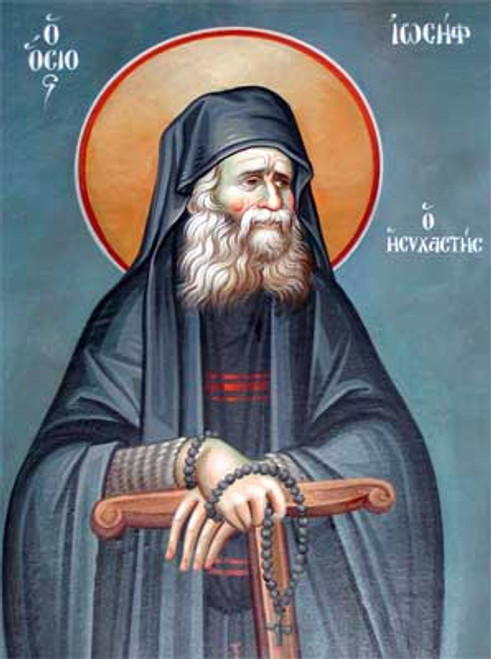August 16
Francis Kottis was born in the island of Paros to George and Maria on February 12, 1897[1] (in other sources: in 1898). In his teens, he went to work in Piraeus. At twenty-three he began to read the lives of the Fathers, a spiritual turning point for him. These lives, particularly those of the strict ascetics, and a dream he had, gave him the desire to enter into monasticism. He responded to this desire by fasting and praying in the nearby countryside, which was uninhabited, and then going to Mount Athos.
The future Elder yearned to pray unceasingly, but had great troubles - he could not find a spiritual father, and the indifference of many monks towards unceasing prayer.I was inconsolable because I was longing so ardently to find what I had set out for in search of God; and not only was I not finding it, but people would not even being helpful.
In the midst of this experience, however, he was granted a vision of the uncreated light, and the gift of ceaseless prayer was given to him.At once I was completely changed and forgot myself. I was filled with light in my heart and outside and everywhere, not being aware that I even had a body. The prayer began to say itself within me...
During this time, he spent time in remote places to recite the Jesus Prayer. Eventually he met Fr Arsenios, who was to become his co-struggler, and found that they shared a common desire for hesychasm, and decided to find an experienced elder. They found Elder Ephraim the Barrel-Maker, and they arranged their lives to provide the maximum silence for praying the Jesus Prayer. In addition to his work and his prayer rule, Fr Joseph went to a cave at sunset to recite the Jesus Prayer for six hours.
After Elder Ephraim the Barrel-Maker's repose, Frs Joseph and Arsenios spent summers moving from place to place around the peak of Mount Athos, so as to be unknown and to find and learn from spiritual monks. In winter, however, they returned to their hut in the wilderness at St Basil's. They possessed only their tattered monastic garments, and Fr Joseph ate three ounces of rusks (dried bread) a day, sometimes with an amount of boiled wild greens. They spoke little so that they could pray more. Fr Joseph was assailed by the demon of fornication around this time, and he would battle this great temptation for eight years, using as weapons extended vigils and using, instead of a bed, a chair to sleep on. Finally, Frs Joseph and Arsenios discovered an experienced ascetic and spiritual father, Elder Daniel.
Time passed, and the fame of Elder Joseph began to spread. After Fr Arsenios ceded the eldership that was his right by length of time in monasticism, Elder Joseph accepted three brothers to live with them, with others living with them for short periods of time. In 1938, seeking solitude from the increasing number of monks who sought his advice, he went to a cave at Little St Anne's, where the brotherhood grew to seven monks.
After approximately 13 years, the large amount of physical labour required to live there became too much, making most of the fathers ill. Elder Joseph moved the community further down the mountain, nearer the sea, to New Skete.
Elder Joseph reposed on August 15, 1959.
In October 2019, the Ecumenical Patriarchate of Constantinople officially recognized Elder Joseph and four other holy monks, Elder Hieronymus of Simonopetra, Elder Daniel and Ephraim of Katounakia, and Elder Sophrony of Essex, as saints of the Holy Orthodox Church.
Clonmacnoise was a thousand years old when it was suppressed by Henry VIII. The monastery was destroyed by Reformation armies in 1552, but the ruins are still very impressive. There is a cathedral, seven other churches, three high crosses, and two stumps of round towers. Fifty kings are said to be buried here with the abbots and monks of the monastery.
Saint Ciaran’s crozier survives to the present day.
Saint Edwin’s body was buried at Whitby, but his head was buried at York in the church he had built. Most of the early English calendars list Saint Edwin as a martyr.
After the death of Saint Edwin, his wife Saint Ethelburga (April 5) returned to Kent, where she became the abbess of a monastery which she founded at Lyminge.







